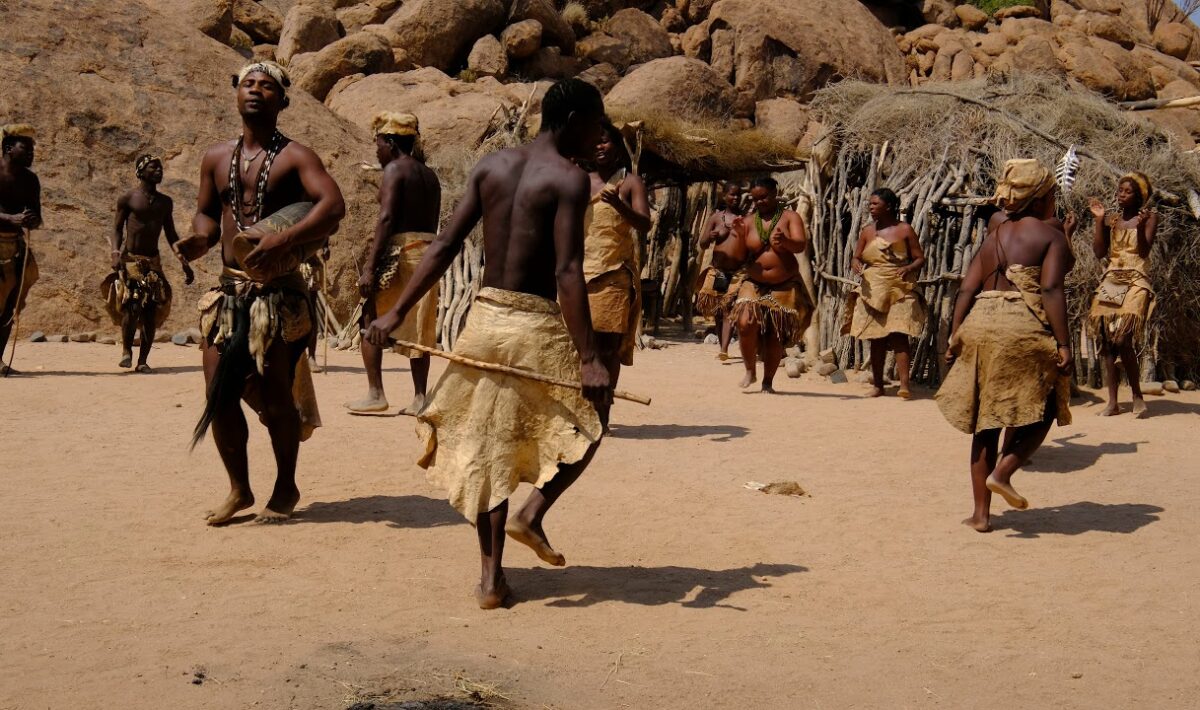Welcome back to our series! Today we will be learning about another Khoekhoegowab-speaking group, the Damara traditional group.
Who are the Damara people?
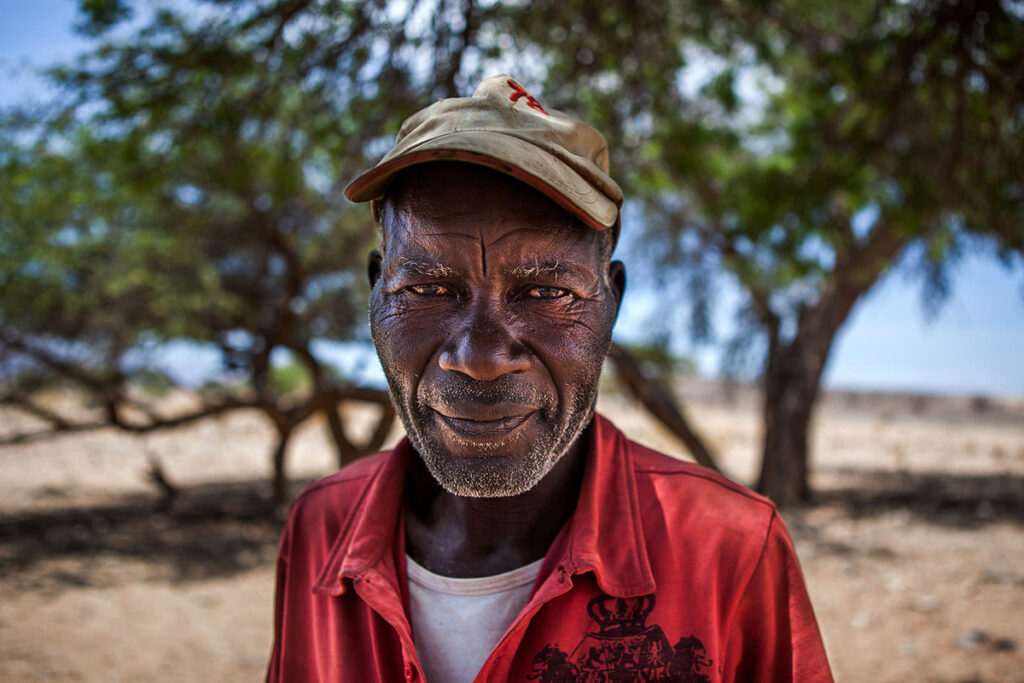
The Damara are said to be of Bantu origins and speak a Khoisan language. It’s believed that the first people who migrated from the north to Namibia were Damara. Together with the Bushmen, the Damara belong to the oldest ethnic groups in Namibia. A mixture of an ancient hunter-gatherer culture and herders of cattle, goats, and sheep had been their original culture.
Damara represents an ethnic group accounting for 8.5% of the population in Namibia. The majority live in the zero-go region and are mainly speaking Khoekhoegowab, but it is common to find them all over the country.
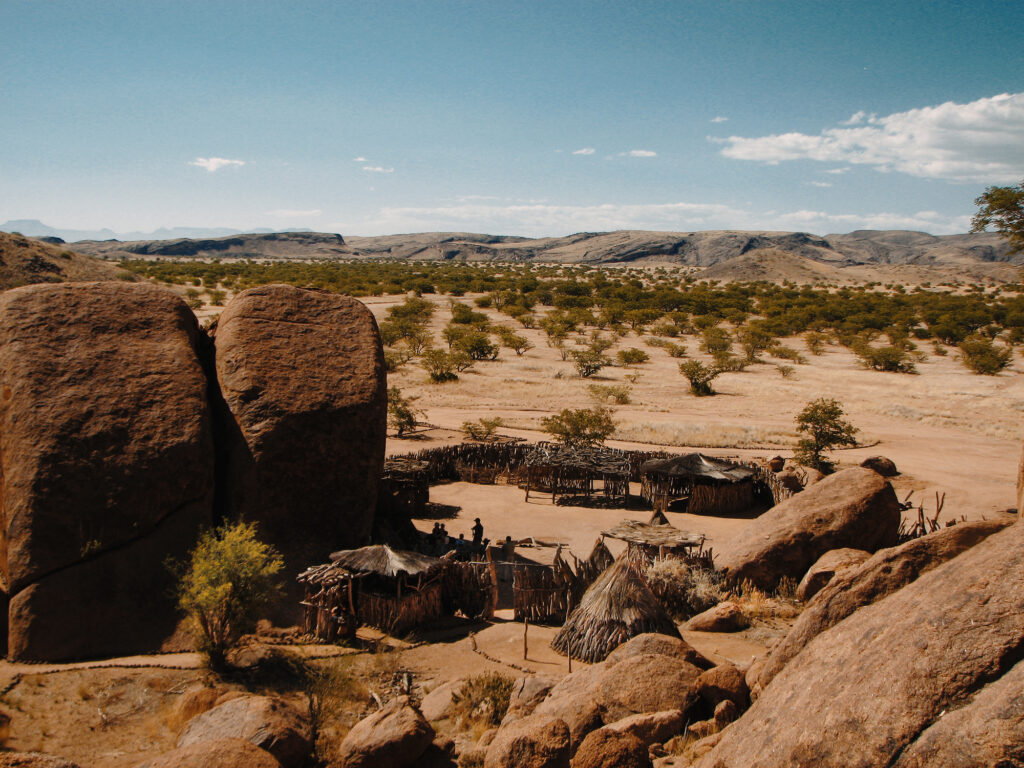
History
The Damara are closely related to the Himba and Herero people, according to genetic research. This is consistent with the idea that they originated from Bantu speakers who switched to a different language and culture. However, historically, they’re not known to have a cultural relationship with any other tribe in Africa, and very little is known about their origins. It is proposed that Damara are a remnant population of south-western African huntergatherers who have evolved the Khoe language of the immigrant Nama people.
A mixture of an ancient hunter-gatherer culture and herders of cattle, goats, and sheep had been their original culture. The Damara were unable to do so during their colonisation of Namibia. The Damaran, just like the Sān, believed in communal ownership of land, meaning that no individual owned land as God had given land to everyone. Therefore, each of them would be living in harmony, rather than one person owning a good-grazing land and the other searching for some kind of existence. The result has been that a number of people have been displaced on this basis.
Tradition and culture
In traditional practice, the Damara have been split into several tribes, each with a separate chief, but all are ruled by one monarch. Some of the Damara, who continue to live on farms and exercise their traditional practices, have become extremely wealthy from cattle and sheep farming. While men hunt and take care of cattle, women continue to perform the customary female tasks, such as domestic work or taking care of children.
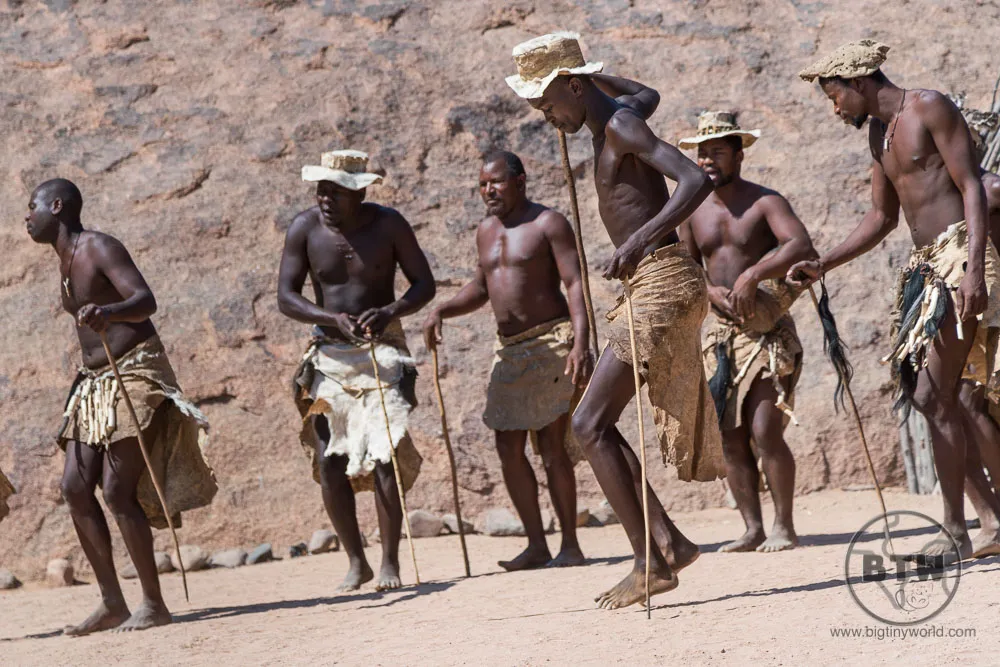
Traditional Attire
The Damarans were also using animal hides to make clothing, just like other African peoples. Springbok and goats for clothing, sheep and jackals for blankets were the main animal hides used. Damaran traditional clothes and attire differentiated between a girl, an unmarried or married woman, and an elderly woman in the same manner that they differentiated between boys, unmarried and married men, and men of age.
Modern day Traditonal Attire
The Damara culture has also seen the use of textiles take the place of animal hides, as the aforementioned attire is mostly worn at ceremonials and on lucky days. As a result, the Damaran searched for the ideal replacement for animal hides and invented the Damarokoes (Damara garment). The Damaran people were converted to Christianity, which led to the introduction of the Damarokoes, whom missionaries adopted from their wives. They did this because they thought the animal hides were “primitive and exposing.” With its ankle-length, long sleeves, and a khens (shawl) for maximum covering, the dress used to cover up the “nude” Damara women.
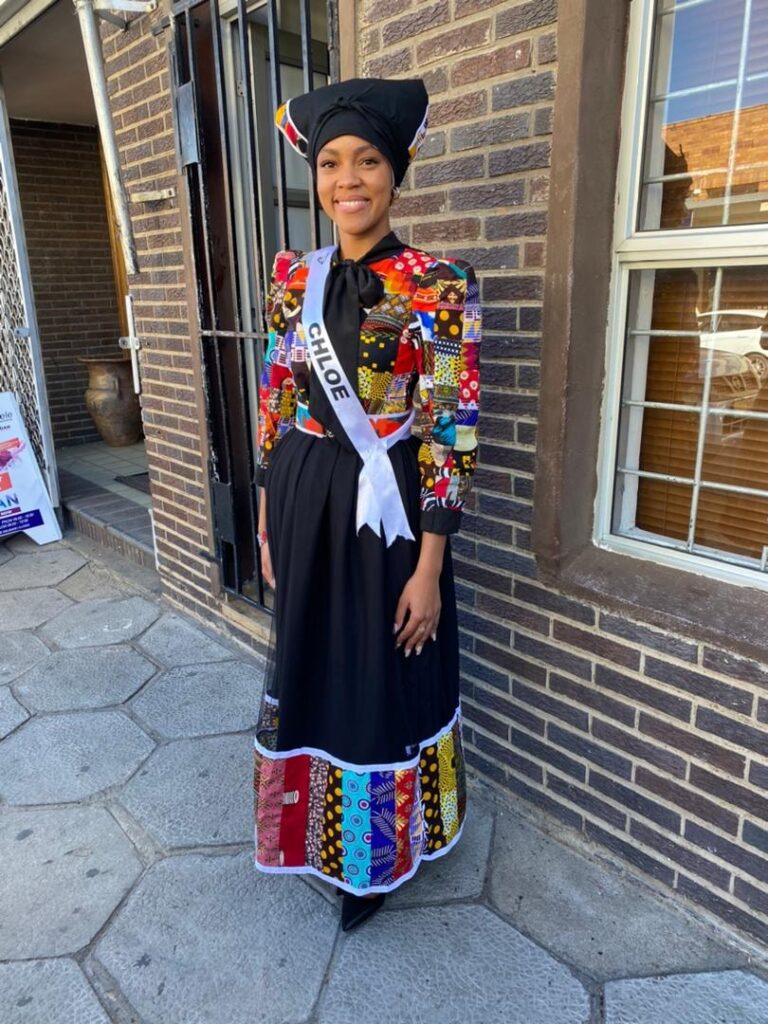
The Dama khaib (headgear) is a unique innovation of the Damara women as they shaped a headgear that can be fashionable yet work effective as they still could khao (carry or load something on head) water containers and firewood. It is not only the khaib that was fashionable and work-effective but also the sleeves, as the sleeves have a protruding elbow design, allowing the elbow to contract and release without constraint. The length of the dress is also fashionable and effective, as it is not too long so as not to be caught by twigs, branches, or thorns.
Damara men, on the other hand, wore shirts, coats, or blazers, with Damara colours being blue, white, and green, sometimes with print or embroidery.
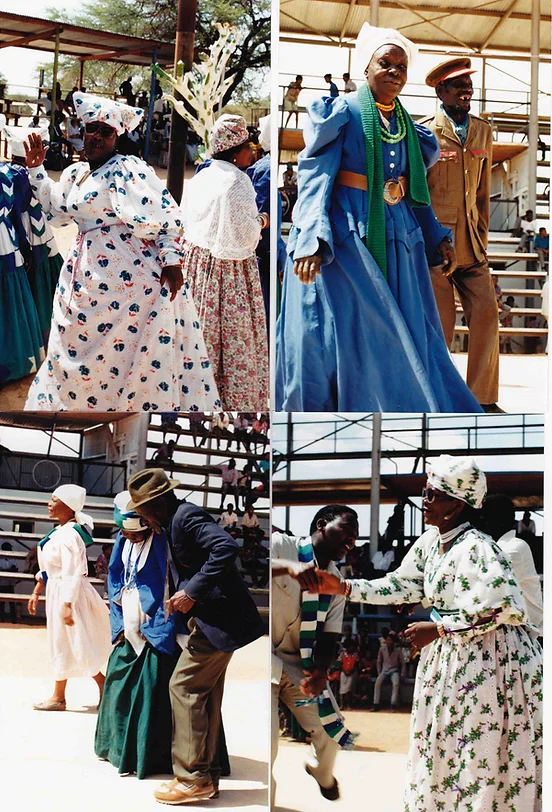
Additional facts:
The name “Damaqua” comes from the addition of the Khoekhoe suffix “-qua/khwa,” which means “people.”
In 1970, the South African government settled the Damara in Damaraland, an area of poor soil and irregular rainfall. Due to this, many Damara now work in urban areas, and only about one-quarter of their numbers still occupy Damaraland.
Man wore arm bangles (ganugu) and gorokhuigu (anklets), which were unadorned in design and denser than those of women. A strand of beads that criss-crossed the chess, known as a karab, was also worn by men.
Tsaob (ash) was used as an anti-perspiring agent by the Damaran, as they believe that it is the purest substance on Earth.
When the first Europeans visited Namibia, the Damara were a group of semi-nomadic gardeners, pastoralists, and hunter-gatherers. They also had skills in mining and metalwork.
We hope you learned something new about the Damara culture. To learn about another culture, read the article about the San on the site. Join us next time as we take a look at another Namibian tribe.


